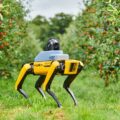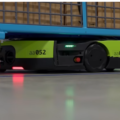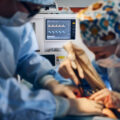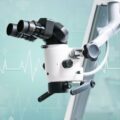Sensors are fundamental components of modern robotics, enabling robots to interact with their environment and make informed decisions. They play a crucial role in determining the robot’s ability to accurately sense and respond to its environment, making them essential for safe and efficient operation.
There are many different types of sensors used in robotics, each designed for a specific purpose. Some of the most common are:
Proximity Sensors: These are used to detect objects in the robot’s environment and are essential for collision avoidance and navigating the environment. They can take many forms, such as infrared, sonar, and lidar.
Touch Sensors: These sensors detect physical contact and are used to determine when the robot has made contact with an object. They are used in applications such as manipulation and grasping.
Vision Sensors: These sensors allow the robot to “see” its environment and make decisions based on visual information. They can take the form of cameras or structured light sensors and are essential for tasks such as object recognition and navigation.
Force Sensors: These sensors detect the forces acting on the robot and are used for tasks such as determining the weight of an object or measuring the forces involved in a collision.
Accelerometers: These sensors detect changes in linear or angular acceleration and are used for applications such as motion detection and stabilization.
The use of sensors in robotics has revolutionized the field, enabling robots to perform a wide range of tasks that were previously impossible. However, sensors also pose unique challenges, such as:
- Reliability: sensors must be reliable and consistent; otherwise, they can cause the robot to behave unexpectedly or make incorrect decisions.
- Accuracy: Sensors must be very accurate so that the robot can make informed decisions. This is especially critical in safety-critical applications.
- Integration: Sensors must be able to integrate with the robot’s other components, including its control systems and actuators, to function effectively.
Despite these challenges, the use of sensors in robotics continues to grow as the technology becomes more sophisticated and more advanced sensors are developed. As robots advance and become more integrated into our daily lives, the importance of sensors in robotics will only continue to grow.
In conclusion, sensors are essential components of modern robotics, as they allow robots to interact with their environment and make informed decisions. The use of sensors has revolutionized the field, and as robots continue to advance, sensors will play an increasingly important role in ensuring their safe and efficient operation.






